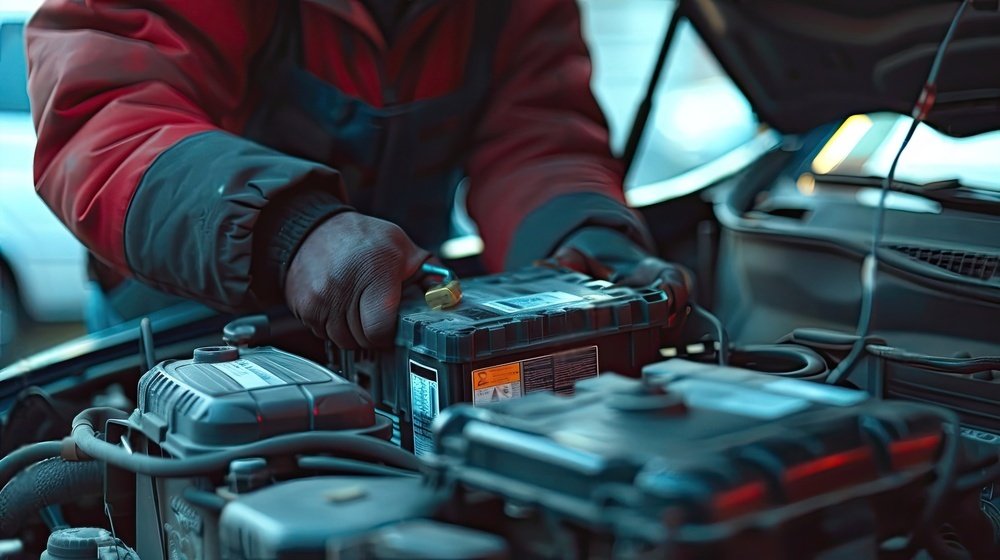Reparation og Udskiftning af Elektroniske Kontrolenheder (ECU’er)
Introduction
Electronic Control Units (ECUs) are the brains of your vehicle’s electronic systems, responsible for controlling various functions such as engine management, transmission operation, fuel injection, and emissions control. Over time, ECUs may develop faults or encounter issues due to factors such as age, heat, or electrical problems. Repairing or replacing ECUs is an essential maintenance task that helps ensure the optimal performance and functionality of your vehicle’s electronic systems.
Why Electronic Control Units (ECUs) Repair and Replacement Matters?
ECUs play a vital role in the operation of your vehicle’s electronic systems, regulating engine performance, fuel efficiency, emissions, and overall vehicle operation. Malfunctioning or faulty ECUs can lead to issues such as poor engine performance, reduced fuel efficiency, and emissions problems. Addressing ECU problems promptly through repair or replacement is crucial to ensure the proper operation of your vehicle and prevent potential drivability issues or safety hazards.


Ensures Optimal Performance
Properly functioning ECUs ensure optimal engine performance, fuel efficiency, and emissions control, leading to better overall vehicle operation and performance.
Prevents Drivability Issues
Malfunctioning ECUs can lead to drivability issues such as rough idling, stalling, or hesitation during acceleration, affecting the vehicle’s performance and drivability.

Steps Involved in Electronic Control Units (ECUs) Repair and Replacement
Repairing or replacing ECUs in your vehicle may involve diagnostic testing, software updates, component repair, or complete unit replacement. Below are the main steps involved:
1. Diagnose ECU Issues
Identify and diagnose ECU issues by performing diagnostic tests using specialized diagnostic equipment or software. Check for error codes, sensor readings, and communication with other vehicle systems to pinpoint the source of the problem.
2. Perform Software Updates
In some cases, ECU issues may be resolved through software updates provided by the vehicle manufacturer. Update the ECU software using manufacturer-approved tools and procedures to address performance or compatibility issues.


3. Repair Faulty Components
If specific components within the ECU are found to be faulty, repair or replace them as necessary. This may involve soldering, component replacement, or recalibration to restore proper functionality.
4. Replace Entire ECU
If the ECU is found to be irreparable or if the cost of repairs exceeds the cost of replacement, replace the entire ECU unit with a new or refurbished unit. Ensure proper programming and configuration to match your vehicle’s specifications.
Benefits of Electronic Control Units (ECUs) Repair and Replacement
Repairing or replacing ECUs offers several benefits, including:
Improved Engine Performance
Properly functioning ECUs ensure optimal engine performance, fuel efficiency, and emissions control, leading to better overall vehicle operation and performance.
Enhanced Drivability
Addressing ECU issues prevents drivability problems such as rough idling, stalling, or hesitation during acceleration, ensuring a smoother and more enjoyable driving experience.
Extended Vehicle Lifespan
Regular maintenance and timely repair or replacement of ECUs help prolong the lifespan of your vehicle’s electronic systems and reduce the likelihood of drivability issues or component failures.
Enhanced Safety
Ensuring the proper operation of ECUs enhances safety by preventing potential drivability issues or malfunctions that could compromise vehicle control and stability.
Conclusion
Electronic Control Units (ECUs) repair and replacement are essential maintenance tasks that ensure the optimal performance and functionality of your vehicle’s electronic systems. By addressing ECU problems promptly and with the help of a qualified mechanic or automotive technician, you can prevent potential drivability issues, ensure reliable vehicle operation, and enhance safety on the road. If you suspect ECU issues in your vehicle, consult a professional for diagnosis and appropriate repair or replacement.



